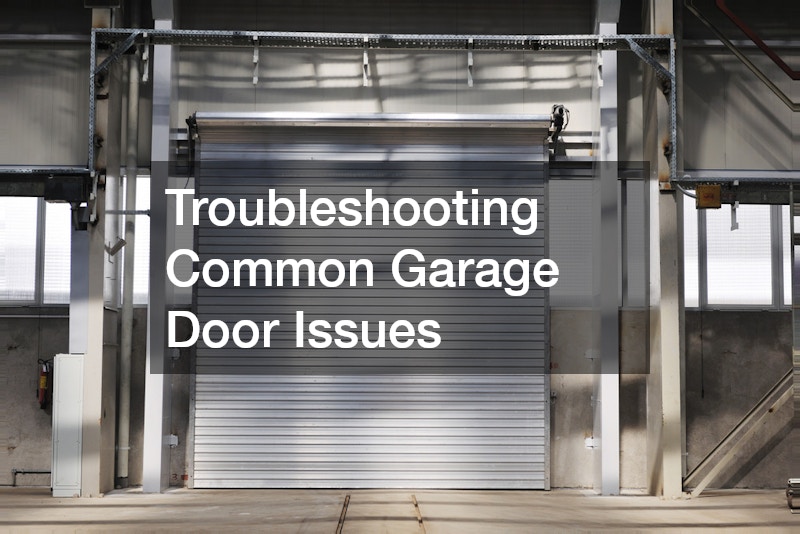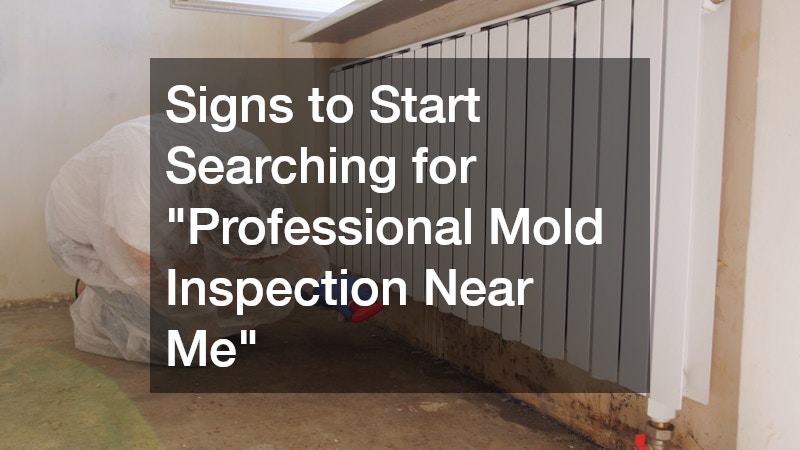A functioning garage door is essential for the security, convenience and overall aesthetic of your home. However, like any mechanical system, it can experience wear and tear over time.
Identifying and resolving issues early can help avoid costly repairs and ensure the door operates smoothly for years. This guide explores some of the most common garage door problems homeowners face and offers advice on how to address them efficiently, all while maintaining safety and reliability.
Identifying Noisy Operation
A garage door that starts making grinding, squeaking or rattling sounds can be more than just an annoyance—it often signals a mechanical issue. These noises typically indicate that some components require lubrication or that parts such as hinges, rollers or springs are worn out. In some cases, loose hardware may also contribute to the noise. Regular maintenance, including applying a silicone-based lubricant and tightening bolts, can often resolve this issue. If the sounds persist despite these efforts, it might be time to consult a professional to inspect for deeper problems such as misalignment or worn bearings.
Addressing Doors That Won’t Open or Close
One of the most frustrating issues is a garage door that refuses to open or close. This problem may stem from a range of causes, from electrical faults to physical obstructions. If the door is unresponsive to the remote or wall switch, the first step is to check the power source. Ensure the motor unit is plugged in and the circuit breaker hasn’t tripped. If electricity isn’t the problem, inspect the sensors located near the bottom of the door tracks. These safety sensors can become misaligned or blocked by debris, preventing the door from operating. Realigning the sensors or cleaning the lenses can often restore functionality.
Dealing with Slow or Jerky Movement
When a garage door opens or closes unevenly or moves more slowly than usual, it’s often a sign of balance issues or problems with the tracks. An unbalanced door places undue strain on the opener and can lead to premature failure. Test the balance by disconnecting the opener and manually lifting the door halfway. If it doesn’t stay in place, the springs may need adjusting. Track alignment is another factor to consider. Bent or misaligned tracks can impede the door’s movement, causing it to jerk or stall. Minor adjustments can be made with a rubber mallet, but significant warping should be handled by a professional.
Responding to Remote Control Failures
Remote controls are a key part of modern garage door systems, offering convenience and added security. When the remote stops working, it’s important to check the simplest issues first, such as dead batteries. Replacing the batteries may solve the problem instantly. If not, the remote may have lost its connection to the opener. Reprogramming the remote according to the manufacturer’s instructions usually restores the link. Interference from nearby electronic devices or a damaged antenna on the opener unit can also affect signal transmission. Moving or shielding interfering electronics may be necessary in more complex cases.
Resolving Frozen Garage Doors
During colder months, garage doors can freeze to the ground, particularly if moisture accumulates and temperatures drop suddenly. Attempting to force the door open in this state can damage both the door and the opener. Instead, applying heat gently using a hairdryer or heat gun can thaw the ice without causing harm. Preventative measures such as applying salt or de-icing solutions along the bottom seal can help avoid this issue in the future. Ensuring that the garage is properly insulated and ventilated can also reduce moisture build-up and minimise the risk of freezing.
Fixing Broken Springs & Cables
The springs and cables in a garage door system bear a significant amount of tension and are critical for smooth operation. If the door suddenly becomes difficult to lift or crashes shut, a broken spring or snapped cable might be to blame. These components are not only complex but also dangerous to replace without proper tools and expertise. If you suspect a spring or cable failure, it’s best to stop using the door immediately and contact a trained technician. Timely professional intervention ensures safety and prevents further damage to the door mechanism.
Preventing Future Problems Through Maintenance
While some garage door issues can’t be avoided, regular maintenance goes a long way in extending the life of the system. Conducting routine inspections to check for wear, rust and proper alignment helps catch problems early. Cleaning the tracks, lubricating moving parts and testing the door’s balance should be part of a homeowner’s seasonal checklist. Not only does this prevent inconvenient breakdowns, but it also promotes safe operation and preserves the door’s overall appearance.
Final Thoughts on Keeping Your Garage Door Reliable
A well-maintained garage door adds value to your home by providing secure, efficient and hassle-free access. Understanding the common issues—from unresponsive remotes to mechanical wear—empowers homeowners to take prompt action when problems arise. While some fixes can be handled with basic tools and knowledge, others require the expertise of a professional technician to ensure safety and reliability. By staying attentive to signs of trouble and prioritising regular maintenance, you can keep your garage door functioning at its best, protecting your property and simplifying your daily routine.
.




